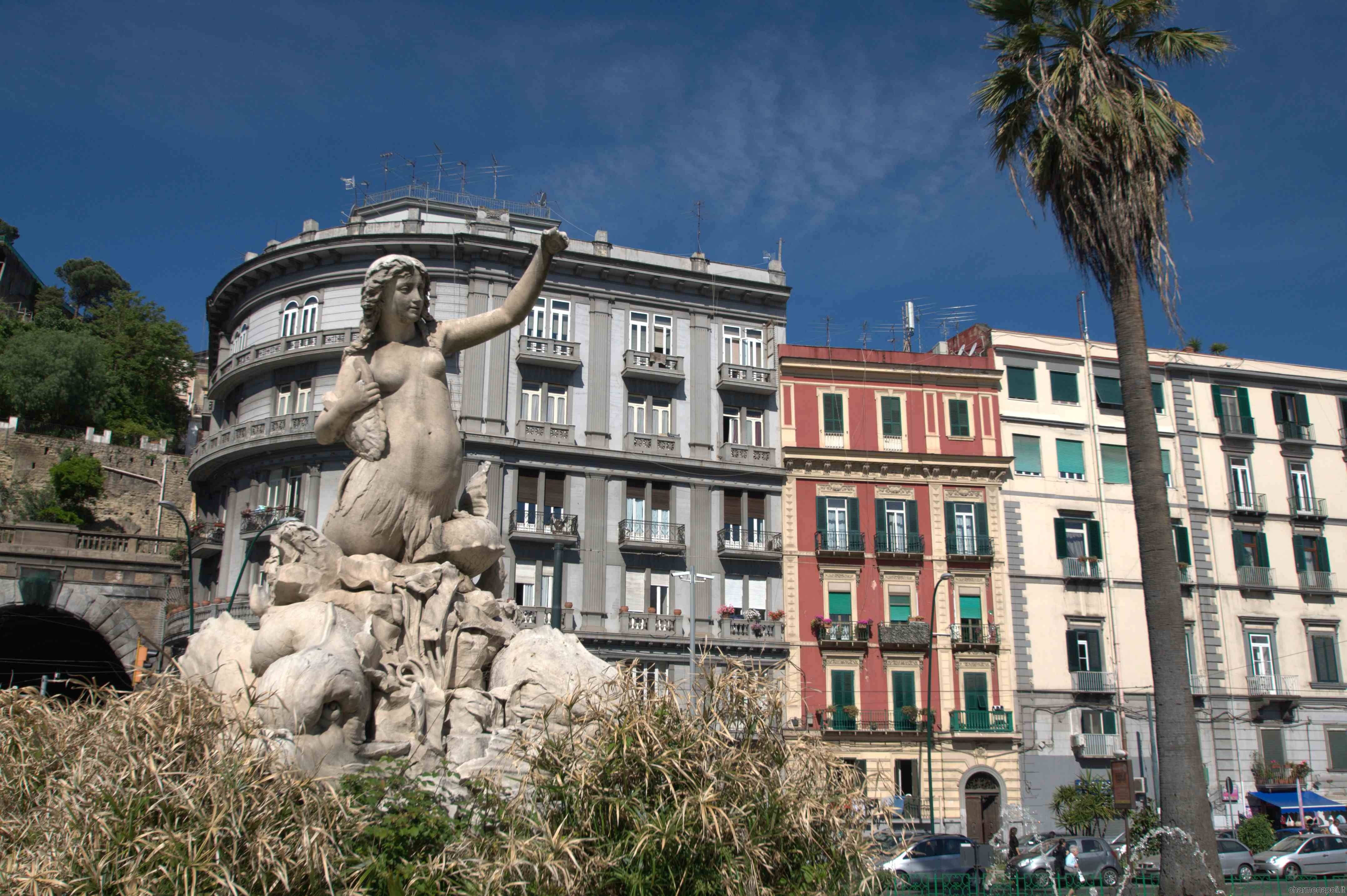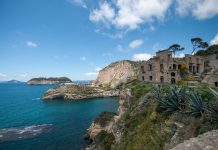A legend that after almost three thousand years does not lose its charm. It is the legend of Parthenope the Siren, extraordinary creature of the sea who died in the waters facing Punta Campanella because she could not seduce Ulysses. Her body was found on the island of Megaride where it was buried with honour. There is also another story of the myth: Parthenope was a beautiful Greek virgin (in ancient Greek Parthenos means “virgin”) who eloped with her mate toward the coast of Campania and, together with a group of settlers, founded the future Neapolis.
The presence of this charming creature has left an indelible trace in the history of Naples, and also in its urban fabric, as testify the names given to certain places, like Corso Sirena, going from Piazza Procelle to Barra (until 1925 the symbol of this municipality was a siren with a double tail, surmounted by a crown), or the ornamental elements decorating the age-old palaces of the historical centre.[charme-gallery]
Have a look at the most famous rock of Naples: Megaride. Its name derives from the ancient Greek mégaron, “noble house, hall” or “big”. Or maybe it derives from Mégaira, the terrible witch. In Greek mythology, Sirens did not always looked beautiful: sometimes they were represented like half women and half bird of prey. Anyway, probably that name derives from a Greek word of Akkadian origin, makallu, meaning “landing”, an appropriate word for that piece of land that in the IX century B.C. hosted the first settlers from Rhodes, coming from Cuma, and their ships. Among them, there must have been also Parthenope.
Let’s return to the legend. This unfortunate siren could not imagine that on her burial rock, on that rock, today connected to the mainland, at that time few dozens of metres from the coast, almost thousand years later, would have been built one of the richest villas of the Roman Empire, the marvellous residence of Lucius Licinius Lucullus, on which foundations has been built, a couples of centuries later, one of the symbols of Naples: Castel dell’Ovo, the famous castle belonging to the “wizard” Virgil. [charme-gallery]The body of Parthenope was placed in an impressive tomb, that scholars and archaeologists variously located on the hill of Sant’Aniello a Caponapoli (near piazza Cavour), at the mouth of Sebeto river (near piazza Plebiscito), under the foundations of Santa Lucia church (built on a temple devoted to the cult of the siren), or under the foundations of San Giovanni Maggiore church, in via Mezzocannone (where there is an inscription on a plaque in a palaeo-Christian building). But we cannot exclude that she was buried on that small island, maybe under the walls of Castel dell’Ovo, on Megaride island.
The mythical Parthenope was soon considered the protector of Naples, and she was honoured with sacrifices. The people venerated her so much that decided to give her name to the small fishermen village that was goin to be found on the coast: Parthenope, nowadays Naples.The myth must not be too far from truth, because in Eastern Greece, at that same time, the religious cult of the sirens, and that of Parthenope in particular, was flourishing.
On that small island the settlers of the ancient capitol city seem to have raised an altar devoted to the mythical creature of the abyss. Many, during the centuries, tried to give a face to this goddess. (followed second part)

 Italiano
Italiano














